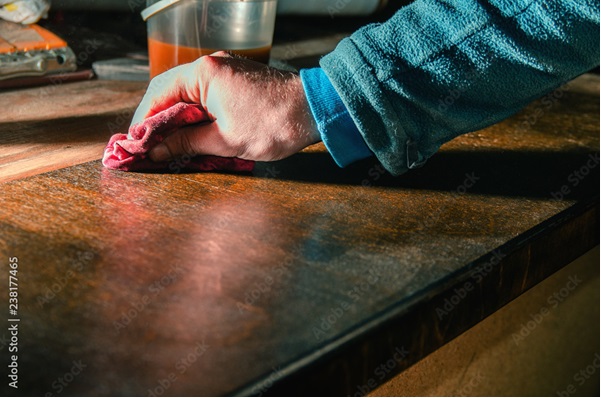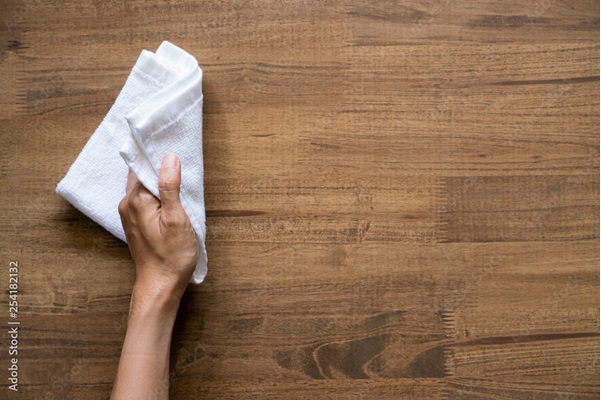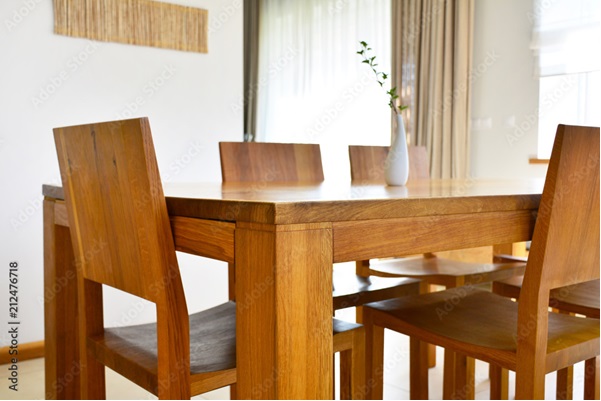


Long Form Blog Post - Grand Brands, LLC
Wood furniture is an eternally tasteful choice for appointing and beautifying your home. People have used wood to provide elegance, functionality, and warmth to their abodes for centuries. Small wonder. Wood is strong and durable and adds natural luster and loveliness to any space. But wood can’t do it all on its own. It needs regular care and cleaning to ensure it remains looking lovely and in pristine condition. Consider this guide to properly cleaning wood furniture to help you care for your favorite pieces.
Why You Need To Keep Wood Clean
Wood is a natural material. As such, and under certain conditions, it can lose its finish and shine and even fade or deteriorate if you don’t properly care for it. Dust, grime, and spills attack the finish and the wood beneath it. Regular cleaning preserves the wood’s appearance and extends your furniture’s lifespan. Take time to clean it periodically and properly, and you’ll enjoy it for years to come.
Wood Finish Types
Let’s start with the question, “What is a finish?” Short definition: a wood finish is a protective coating applied to enhance the wood’s appearance and protect it from damage. Familiarize yourself with your furniture’s finish before you commence cleaning. Here are several common types:
- Wax finish: These finishes produce a soft, matte appearance and require gentle cleaning.
- Lacquer or varnish: This finish is hard and durable, derived from resin extracted from trees and various waxes derived from organic sources such as beehives and insect resins.
- Oil finish: This finish thoroughly penetrates the wood, enhancing its natural beauty. Oil finishes come from plants such as the tung tree and other sources.
- Paint: This finish, as the name suggests, is a simple latex or oil-based paint. You must clean the surface regularly to keep it from chipping and fading.
[Image A]
Your Cleaning Guide
Follow these steps to tackle just about any kind of wood furniture and ensure it stays looking good.
Supplies
Wood furniture requires a specific set of tools to clean it correctly. Fortunately, you can find many of them around the house. Invest in microfiber cloths—these are extra soft and reduce the risk of scratching or otherwise damaging the wood through unnecessary roughness. Mild dish soap is an excellent and gentle cleaning solution for wood furniture when properly mixed with warm water. A soft-bristle brush is excellent for getting into tight spaces where dust builds up, especially a softer toothbrush (have a few cotton swabs on hand in case the clean-up needs to be extra fastidious). Vacuum cleaners with dusting attachments can also aid in getting rid of dust and debris. Find the right wax or polish for a final coating once you’ve removed the grime as a finishing touch.
Dust Regularly
We highly suggest you dust weekly between major cleanings. Dusting your wood furniture prevents the buildup of dirt and grime, which damages the finish and works its way into the grain. Microfiber cloths are ideal for dusting. Use the soft-bristle brush or a vacuum cleaner with a brush attachment for intricate designs or carvings. Dust is a slow and insidious enemy. Defeat it before it can take root!
Clean Up Spills
The clock starts ticking the moment you spill a drink or anything else. Every second counts because the longer a substance sits on the wood, the more likely the material will absorb it, leaving a permanent mark. Wipe up spills as soon as they occur using a soft cloth, but avoid rubbing it in. Vigorous and even gentle rubbing can spread the spill or push it deeper into the wood—and don’t think that water is harmless. It can react with the wood and leave unsightly stains requiring complete refinishing.
Cleaning Solutions
As mentioned, several drops of gentle dish detergent in warm water make for a perfect cleaning solution for wood furniture and much more. On the other hand, for oil-finished or unfinished (natural) wood, visit the hardware store and ask for suggestions on appropriate and non-harsh cleaners.
Start Small
As a rule of thumb, test your cleaning solution on a small area on the furniture that is out of sight. This test clean will reveal whether the cleaner is too harsh without damaging the overall look of the piece. Wait an hour or two before proceeding to make sure the cleaner doesn’t cause any damage over time.
Proper Cleaning
Dip the microfiber cloth into the cleaning solution and wring out the excess water before applying it. Gently wipe the wood’s surface using long strokes. Follow the wood’s grain to avoid streaks. Employ the soft-bristle brush to tackle stubborn dirt, but again, don’t force it. Soon afterward, use a dry microfiber cloth to wipe the furniture and remove water and soap residue. Dry it to prevent water damage.
[Image B]
Special Care for Different Finishes
Not all woods and finishes are the same. Here’s a swift breakdown of different types and the approaches to take to ensure their protection and that they remain clean.
Unfinished Wood
Unfinished wood has no protective finish. It is wood in its most natural state after cutting and shaping. Thus, it is highly susceptible to staining and damage. Clean it with a soft, dry cloth to remove dust, but for deeper cleaning, use a damp cloth. Immediately dry the wood after deep cleaning. Avoid using soap or water-based cleaners on unfinished wood, or you’ll risk long-term stains.
Wax Finish
You may clean wax-finished wood with a soft, dry cloth. Don’t use water or liquid cleaners—many strip the wax. Reapply the wax every six months to ensure a clean finish.
Lacquer or Varnish
Lacquer and varnish provide a tougher and more durable finish and you may safely clean them with the mild soap and water method. Regardless, don’t allow the water to soak into the wood. After cleaning you’ll derive a gorgeous shine with a furniture polish formulated to work best with lacquer or varnish finishes.
Oil Finish
You must clean oil-finished wood with microfiber cloths and cleaners specifically designed for oil finishes. Don’t use water based cleaner on oil finishes, and regularly reapply the oil to nourish and protect the wood.
Painted Wood
Paint is a bit easier to clean up. Dust painted wood furniture regularly with a soft cloth and periodically clean it with the with a mild soap and water solution, being careful not to scrub too hard. Stick to dish detergent and avoid abrasive cleaners. They ruin or weaken the paint.
Final Tips and Tricks
Protect your wood furniture between cleanings. Keep furniture out of direct sunlight, which fades finishes, dries out the wood, and causes other damage. Control your home’s humidity levels by employing a dehumidifier to prevent moisture from infiltrating the wood. Keep drinks, plates, and the like out of contact with the wood by using coasters, trivets, and placemats. These methods protect the wood from moisture and high heat.
Final Thoughts
That was our guide to properly cleaning wood furniture. Properly cleaning and maintaining your wood furniture is a challenge, but it’s well worth tackling. Regular care keeps your furniture looking beautiful, extends its life, and saves you the hassle and expense of replacing it. Contact Grand Furniture today if you’re looking for wood and other furniture. We offer gorgeous furniture through reasonable financial arrangements. You can pay monthly for dining room sets and other pieces for your home. We look forward to hearing from you!


